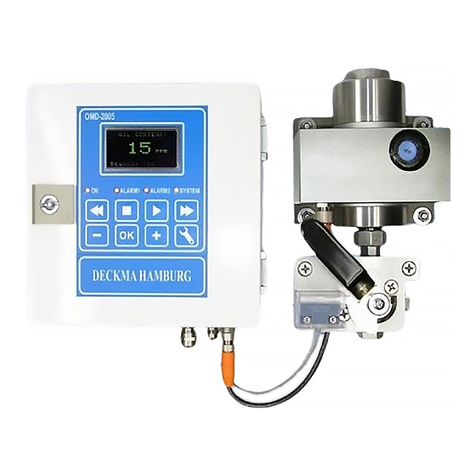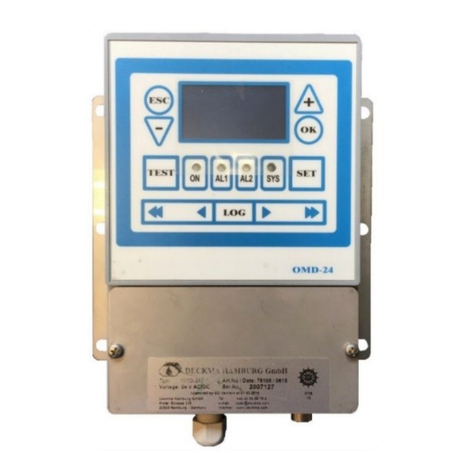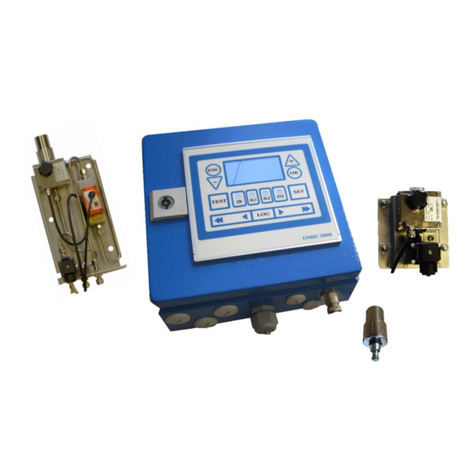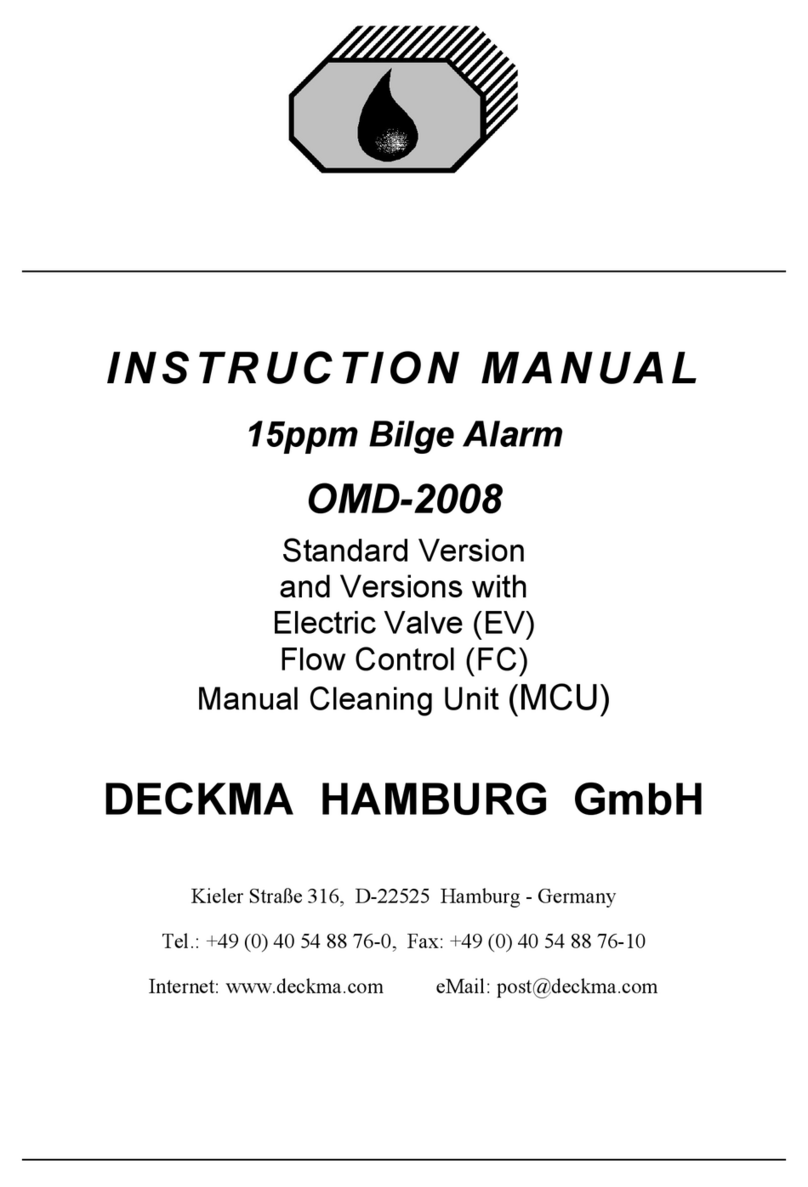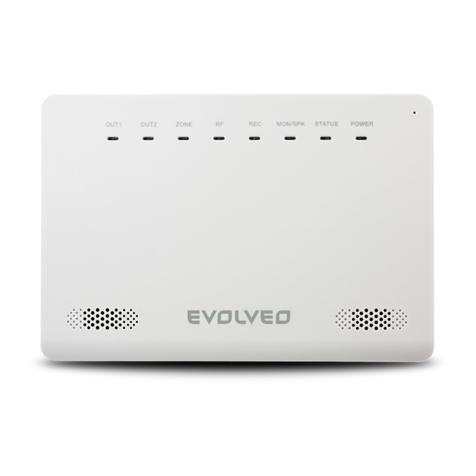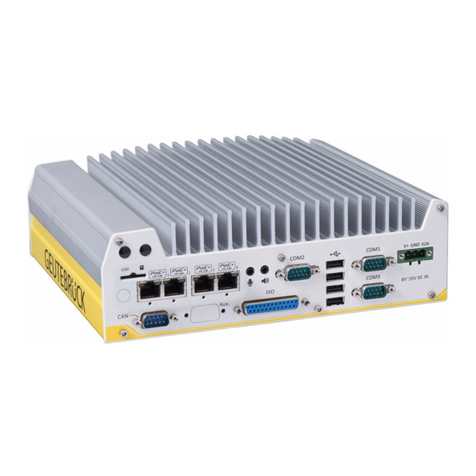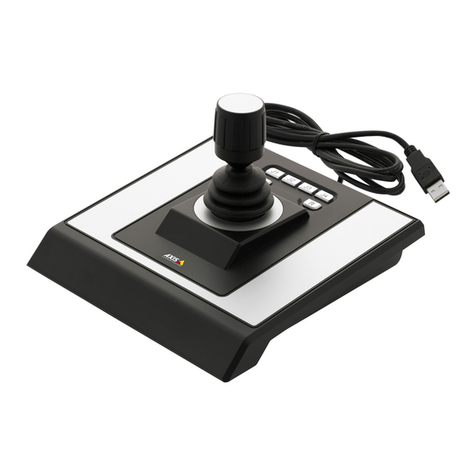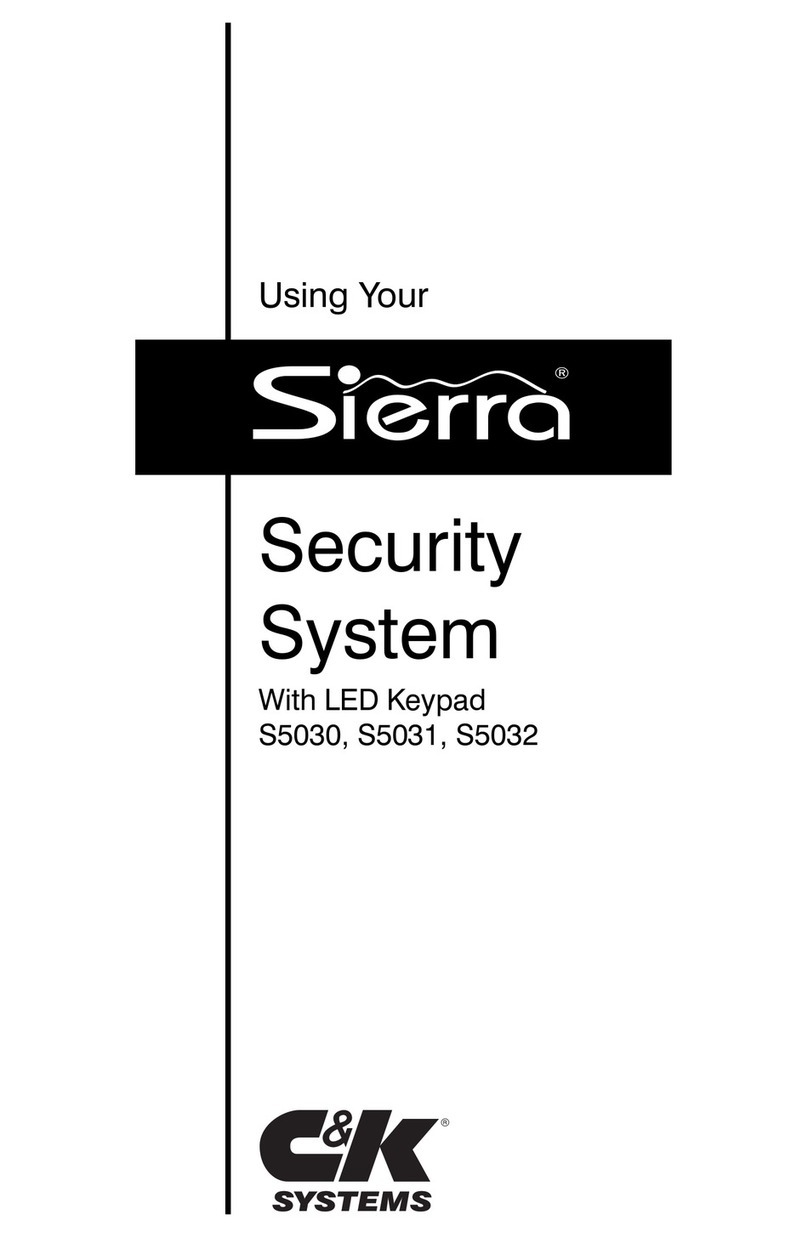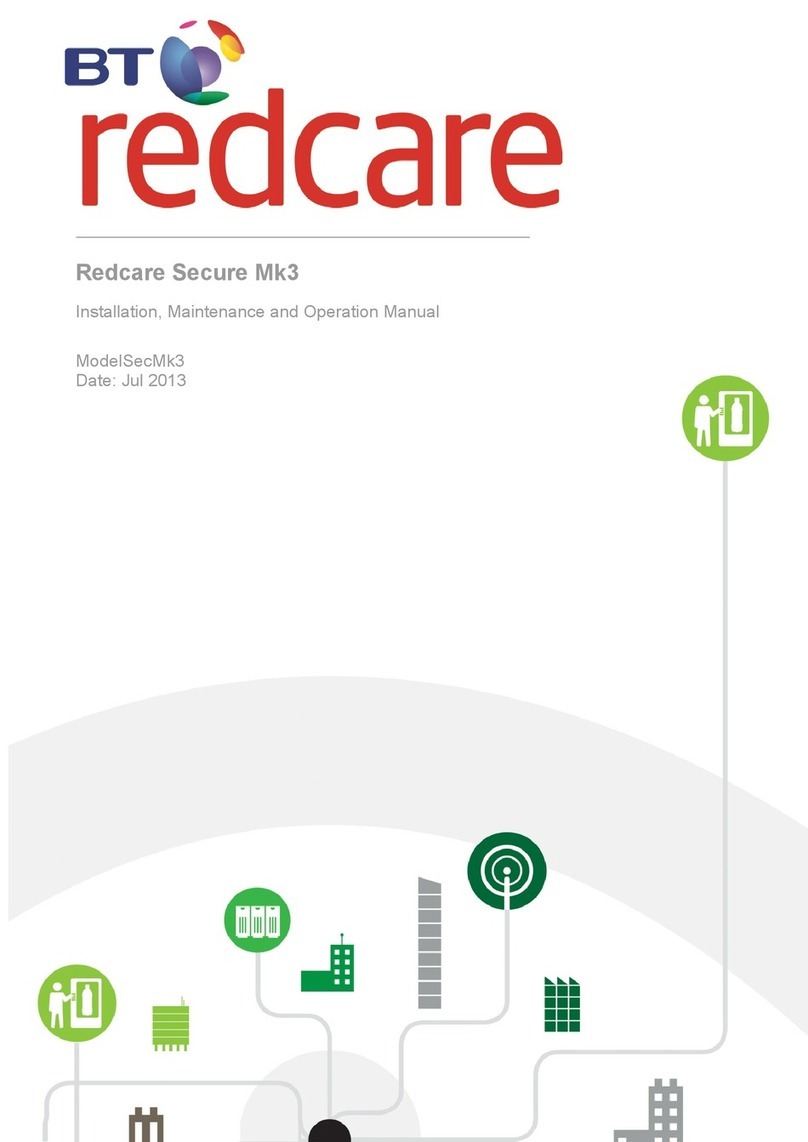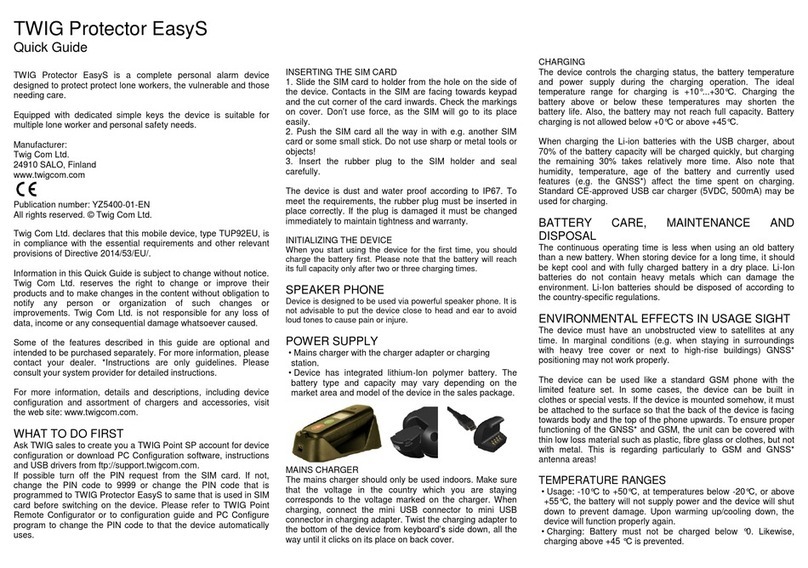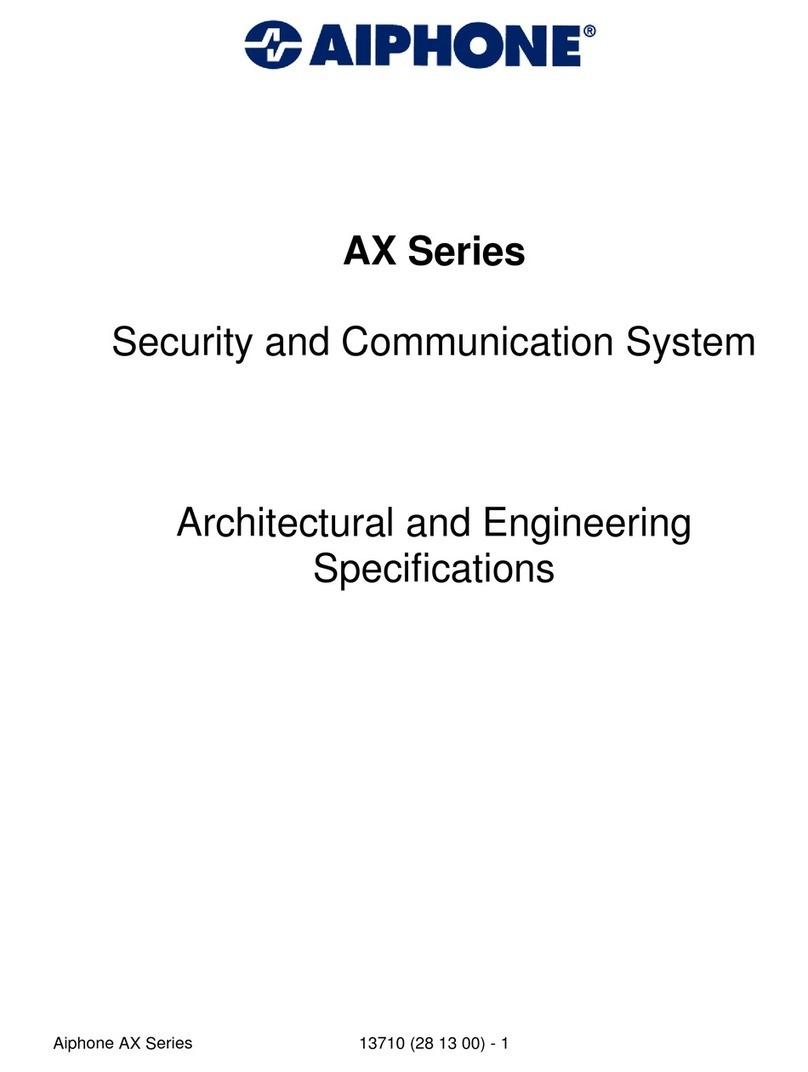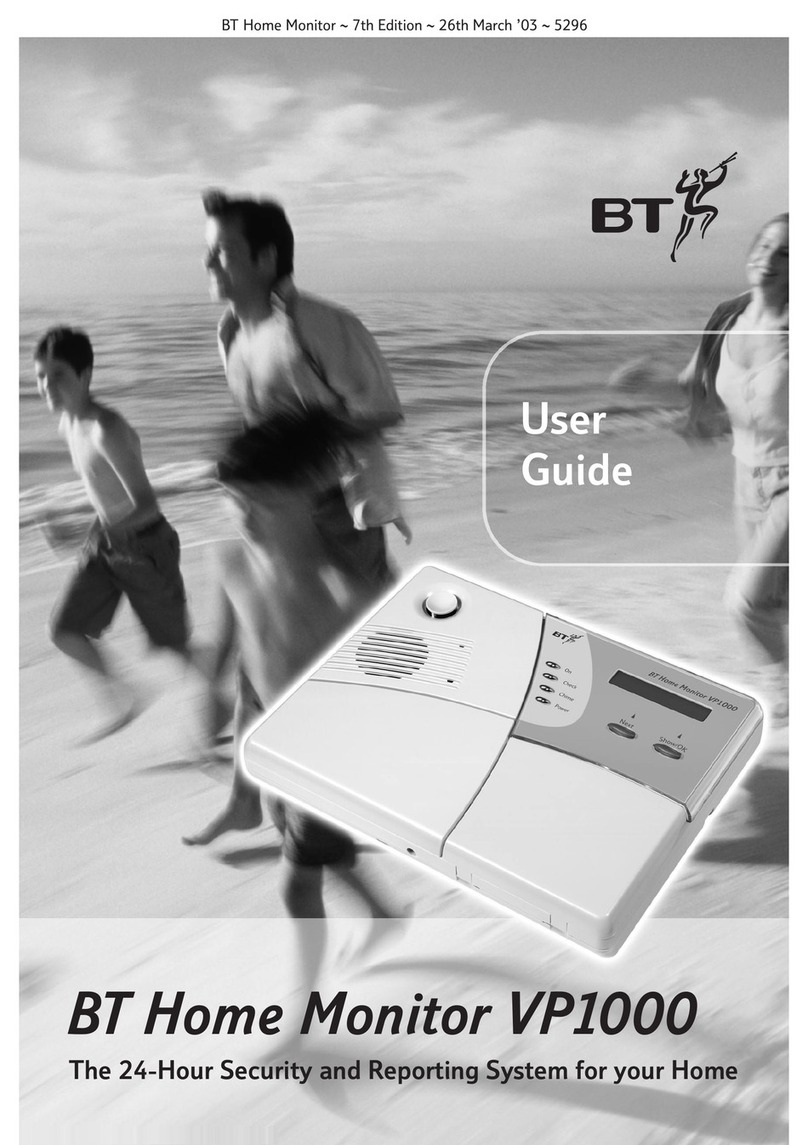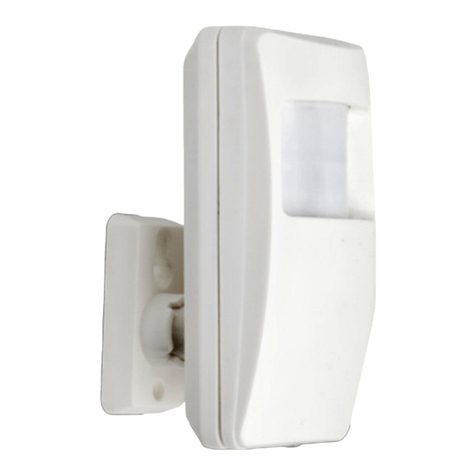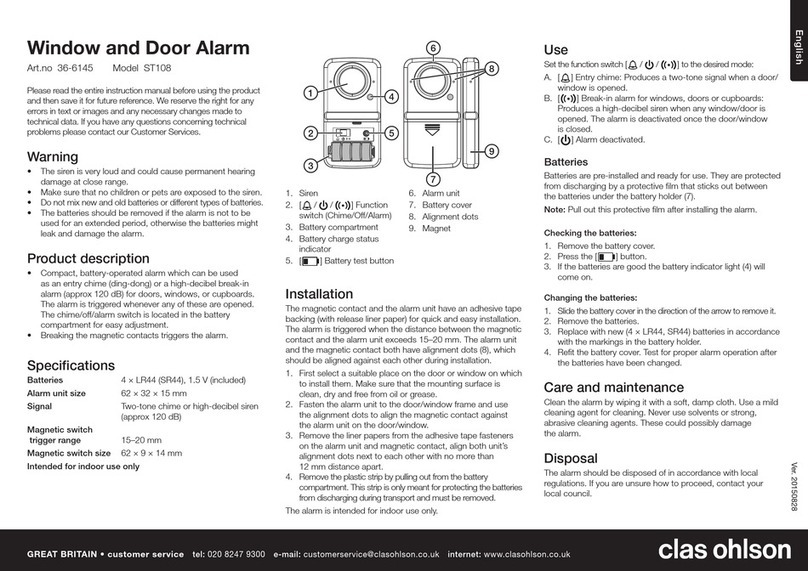Deckma Hamburg FMS3000 User manual

Technical documentation 201309IA
FMS3000
Tel.: +49 (0)4105 / 65 60 – 0 * DECKMA GmbH * Fax: +49 (0)4105 / 65 60 – 25
Installation Instructions
Version 0.
2
2
7
/09/201
6
p
ag
e
1
of
13
Fire Alarm System FMS3000
Installation Instructions
Version history
Version
Date Author Checked Note
0.1 16/09/13 JB TK Produced based on the old operating instructions
0.2 27/09/16 TK STO Configuration update explained in more detail (page 13)
Checked by ES Elektronik Service; Jan Broockmann
23/09/2013
Name – company Date
Approved by Thomas Kruse DECKMA-GMBH
23/09/2013
Name – company Datum

Technical documentation 201309IA
FMS3000
Tel.: +49 (0)4105 / 65 60 – 0 * DECKMA GmbH * Fax: +49 (0)4105 / 65 60 – 25
Installation Instructions
Version 0.
2
2
7
/09/201
6
p
ag
e
2
of
13
Index
1. Cabling requirements.................................................................................................................... 3
2. Fire detectors................................................................................................................................ 5
2.1. Sensor and base.................................................................................................................... 5
2.2. Connection of different fire detector types.............................................................................. 5
2.3. Guideline for the installation of sensors and bases or fire detectors ....................................... 7
2.4. Testing the fire detectors ....................................................................................................... 7
3. Commissioning ............................................................................................................................. 8
3.1. General.................................................................................................................................. 8
3.2. Outputs.................................................................................................................................. 8
3.3. Setting the BUS address........................................................................................................ 9
3.4. Termination resistors ............................................................................................................. 9
3.5. Use of the modules/components............................................................................................ 9
3.6. Organisation of the software versions .................................................................................. 10
3.7. Sequence of on-board commissioning ................................................................................. 10
4. Maintenance ............................................................................................................................... 10
4.1. Checking the fire detectors .................................................................................................. 10
4.2. Checking and changing the accumulator ............................................................................. 10
5. Installation .................................................................................................................................. 11
5.1. Console installation.............................................................................................................. 11
5.2. Switch cabinet installation.................................................................................................... 11
6. Configuration .............................................................................................................................. 13

Technical documentation 201309IA
FMS3000
Tel.: +49 (0)4105 / 65 60 – 0 * DECKMA GmbH * Fax: +49 (0)4105 / 65 60 – 25
Installation Instructions
Version 0.
2
2
7
/09/201
6
p
ag
e
3
of
13
General
The FMS3000 consists of several modules in separate housings. The individual modules are
connected to each other through an internal BUS (Binary Unit System) and a common supply voltage
(24V DC). All modules, with the exception of the main panel, are intended for mounting on a support
rail and are normally installed together in a metal switch cabinet. The main panel (HT) is constructed
as a front panel built-in device. The FMS3000 can either be wall mounted or mounted in a console.
When a fire detector detects a fire, then the fire loop module (FM) recognises the event. The main
module (BUS Master) cyclically queries the status of all modules. In the course of this, it receives the
fire alarm from the fire loop module (FM). Independent of the configuration, the main module transmits
to the output module which outputs it should connect. In addition, it transmits the fire alarm to the
VDR module and printer module (if present). VDR and printer module output the fire alarm through a
VDR output or through the printer. In addition, the main module informs the main panel (HT) about the
fire alarm, and it then warns the user acoustically and optically of a fire.
1. Cabling requirements
For safe operation of the entire system, the following cables are recommended:
Plug
Modul
e
Cable type
Wires
-
diameter
POWER Main (JN0-M) power supply unshielded cable Min. 3 x 1.5mm²
POWER Emergency
(JN0-E)
power supply unshielded cable Min. 3 x 1.5mm²
24V OUT (JN1) power supply unshielded cable Min. 2 x 1.5mm²
24V IN/AKKU (JN1) main module unshielded cable Min. 2 x 1.5mm²
(power supply); Min 2
x 1.5mm²
(accumulator)
MONITORING (JN2) power supply/main
module
unshielded cable Min. 6 x 0.75mm²
RELAY (JP10) main module unshielded cable Min. 2x0.75mm²
FMS-BUS (JP1-JP9) main module/fire loop
module (FM)/output
module/VDR
module/printer module
shielded twisted pair
cable
2x2x0.75mm²
RELAY (JAN,JAP) fire loop module (FM) unshielded cable Min. 2-5 x 0.75mm²
1
2
LOOP (JLN, JLP) fire loop module (FM) unshielded cable Min. 2-8 x 0.75mm²
3
4
RELAY (JR1, JR2) output module unshielded cable Min. 2/8 x 0.75mm²
24V OUT (JOC1) output module unshielded cable Min. 2/4 x 0.75mm²
TST IN+24V OUT
(JOC2)
output module unshielded cable Min. 2/4 x 0.75mm²
FMS-BUS (JR1) main panel shielded twisted pair
cable
5 x 2 x 0.75mm²
5

Technical documentation 201309IA
FMS3000
Tel.: +49 (0)4105 / 65 60 – 0 * DECKMA GmbH * Fax: +49 (0)4105 / 65 60 – 25
Installation Instructions
Version 0.
2
2
7
/09/201
6
p
ag
e
4
of
13
VDR(RS-458) (JP2) VDR module shielded twisted pair
cable
2 x 2 x 0.75mm²
6
VDR(RS-232) (JP3) VDR module shielded standard
serial cable
PRINTER (JR1) printer module shielded standard
parallel printer cable
The recommended cable types are FMGSGO, LMGSGO and MGSGO (Marine) according to
VG95218 Part 62.
1Cross-section according to length of cable and current.
2Number of wires depends on the outputs to be connected.
3Cross-section depending on the length of the loop.
4Number of wires depends on the outputs to be connected.
5Maximum length: 500m.
6Maximum length: 500m.

Technical documentation 201309IA
FMS3000
Tel.: +49 (0)4105 / 65 60 – 0 * DECKMA GmbH * Fax: +49 (0)4105 / 65 60 – 25
Installation Instructions
Version 0.
2
2
7
/09/201
6
p
ag
e
5
of
13
2. Fire detectors
2.1. Sensor and base
Certain fire detectors always consist of a base and a sensor. The conventional sensors SLR-E3, FJ-
AE3, DFJ-CE3, DCD-AE3 and DCD-CE3 can all be mounted on the standard base (YBN-R/6). Follow
the guideline given below to install and maintain the FMS.
In case these instructions are ignored, correct functioning cannot be guaranteed!
Warning:
The CDX range of sensors cannot be used to prevent fires, but are rather only intended to detect a
certain characteristic of a fire.
The sensors DCD-AE3 and DCD-CE3 are used to detect changes of temperature and cannot detect
smoke or other phenomena. When installing sensors, check that the location of each individual sensor
complies with the applicable regulations and recommendations.
2.2. Connection of different fire detector types
Each fire loop module (FM) has eight conventional loops. After installation, all connections are to be
secured with screws to prevent them coming loose due to vibration. The drawing shows a connection
plan of various conventional sensor and base types to a fire loop module (FM).

Technical documentation 201309IA
FMS3000
Tel.: +49 (0)4105 / 65 60 – 0 * DECKMA GmbH * Fax: +49 (0)4105 / 65 60 – 25
Installation Instructions
Version 0.
2
2
7
/09/201
6
p
ag
e
6
of
13

Technical documentation 201309IA
FMS3000
Tel.: +49 (0)4105 / 65 60 – 0 * DECKMA GmbH * Fax: +49 (0)4105 / 65 60 – 25
Installation Instructions
Version 0.
2
2
7
/09/201
6
p
ag
e
7
of
13
2.3. Guideline for the installation of sensors and bases or fire detectors
−Make sure that fire detectors are installed according to the applicable building
regulations and standards.
−Sensor and base combinations should only be installed where:
othe ambient temperature is between -10°C and +50°C.
othe condensation and humidity values are between 10% and 95% RH – non-
condensing (at 40°C).
−Only install fire detectors in suitable environments.
−The following environments should be avoided:
oSituations, in which there is heavy condensation.
oSituations, in which aggressive gases are present.
oSituations, in which dust or steam is present.
oSituations, in which obstructions could hinder the flow of air to the fire detectors.
oAreas at risk of explosion.
−Do not use high-voltage testers on the sensor or the base.
−Certain actions can lead to permanent damage to the sensor:
oDismantling the housing.
oImpacts or shocks.
2.4. Testing the fire detectors
−If damage to a fire detector is suspected, it is to be replaced.
−After installation, all fire detectors in the fire alarm system are to be tested to ensure
that all function correctly.
−Installation and maintenance should only be carried out by appropriately trained
specialist personnel.
−Do not test the function of fire detectors with a flame or open fire.
−Functional tests should be performed with appropriately configured sensor test devices
in order to be able to determine correct functioning.
−Maintenance must be carried out after a testing period specified by the regulations of
the person responsible for the fire detector system.
−If no such regulations are available, we recommend annual testing. In this case, the
following tests are to be included:
oa visual check for dirt and mechanical damage to the fire detector.
oa normal function test with smoke detector and/or heat detector test devices.
−Sensors are delivered with a dust protection cover to keep out dirt during installation.
This is only to be removed after installation!

Technical documentation 201309IA
FMS3000
Tel.: +49 (0)4105 / 65 60 – 0 * DECKMA GmbH * Fax: +49 (0)4105 / 65 60 – 25
Installation Instructions
Version 0.
2
2
7
/09/201
6
p
ag
e
8
of
13
3. Commissioning
The FMS consists of six different modules, which are fixed to a top-hat section rail. More than one
example of three modules (main panel (HT), output module and fire loop module (FM)) can be used in
an FMS. With these modules, the correct setting of the BUS address and the necessary configuration
is important!
3.1. General
The FMS must be connected to the emergency power supply as a "device of secondary operational
importance" (see GL/i/1/3 Section 3).
The FMS must be installed on the bridge or in the main fire control station.
One main panel must be installed on the bridge if the FMS is not located on the bridge. An additional
main panel is to be installed in the loading control room of ships with a loading control room (see
GL/i/1/3 Section 9D)
At least one main panel must be located so that it is accessible for responsible crew members at all
times.
3.2. Outputs
The standard assignment of the outputs of the output module must be:
•Machine alarm system (fire alarm, faults)
•General alarm
•VDR
•Fault and common status display
The remaining outputs can be freely configured.
If these outputs are not configured, the MED permit for the FMS immediately becomes invalid.
The relay outputs (output module: JR1, JR2; fire module (FM): JAN, JAP) in the output module and
the fire loop module (FM) must be externally monitored for short circuit and cable breakage. For this
purpose, a resistor (6k8) must be connected in the cable during installation and a resistor (10k) wired
parallel to the relay. The current that flows through the circuit must be measured. If the relay is open,
less current flows through the resistors R1 and R2. If the relay is closed, a rather higher current flows
through resistor R2 and relay1. If the circuit is interrupted, no current flows. In case of a short circuit, a
very high current flows.
This protection circuit is intended for a Siemens SPS7n.
Should other resistance values be required, because for example no Siemens SPS7 is available,
these can be adapted by the installation company (after discussion with DECKMA) without loss of
guarantee claims for the automation. SELCO (USA), for example, works with 82kOhm and 4.7kOhm
resistors.

Technical documentation 201309IA
FMS3000
Tel.: +49 (0)4105 / 65 60 – 0 * DECKMA GmbH * Fax: +49 (0)4105 / 65 60 – 25
Installation Instructions
Version 0.
2
2
7
/09/201
6
p
ag
e
9
of
13
R1
10k
R2
6k8
Relay 1
3.3. Setting the BUS address
The main module (NM01) has a rotary switch on the right side of the housing. The BUS address is to
be set to 0 in order that the module is the "BUS Master" in the FMS.
The output/fire loop modules (FM) also have a rotary switch on the right side of the housing. The BUS
address is to be set to "0" for the first module of this module type. The second module receives the
number "1", the third "2" and so on …
There can also be more than one instance of a main panel (HT) in the FMS. In order to assign a BUS
address, a jumper must be inserted over two pins directly into the 15-pole D-SUB connector (FMS-
BUS/JR1).
Principal operation no jumper
Parallel operation 1 jumper between Pin 6 and Pin 14
Parallel operation 2 jumper between Pin 7 and Pin 15
In addition, a termination resistor (120 Ohm) must be inserted in the last main panel in the FMS BUS
directly in the D-SUB connector between Pin 12 and Pin 4. Even when only one main panel is being
used, a termination resistor is to be inserted!
If more than one identical BUS addresses are present in an FMS BUS, this causes serious
communications disturbances. Fault-free operation of the FMS is no longer possible.
3.4. Termination resistors
All fire detector loops must be terminated with a 3K
resistor (+/-10%). All "24V OUT" connections
(JOC1, JOC2 (output module)) must also be terminated with a 3K
resistor.
3.5. Use of the modules/components
Only specifically approved components may be used to assemble a fire alarm system (see standards
and regulations).
Recommended is a VDS-approved lead-gel accumulator of type "PBQ 7-12" with a capacity of 7Ah,
although all lead-gel accumulators with VDS approval are permissible. The minimum capacity is
1.2Ah, the maximum about 12Ah. If the mains supply fails, the accumulator is loaded with a maximum
current of 4A.

Technical documentation 201309IA
FMS3000
Tel.: +49 (0)4105 / 65 60 – 0 * DECKMA GmbH * Fax: +49 (0)4105 / 65 60 – 25
Installation Instructions
Version 0.
2
2
7
/09/201
6
p
ag
e
10
of
13
3.6. Organisation of the software versions
The modules of the FMS are each operated with the current software version. The log file
"FMS3000_Software_ChangeLog.txt" lists the current status of the software (see document: 1.4
FMS_Software_Beschreibung).
3.7. Sequence of on-board commissioning
Step 1. Connect all detectors and outputs.
Step 2. Check all wiring for earth connection, short circuit, polarity and interference voltages!
Step 3. Switch on the FMS and check the overall condition.
Step 4. Check the fire detector loops.
Step 5. Check the outputs and additional main panels or other peripheral devices.
4. Maintenance
4.1. Checking fire detectors
The functioning of fire detectors is to be checked at yearly intervals. Dirty and defective detectors are
to be replaced immediately. Defective of missing detectors cause a fault report.
4.2. Checking and changing the accumulator
The average lifetime of the accumulator is about 4-5 years at an ambient temperature of 25°C. The
accumulators should therefore be replaced as a precaution every 4-5 years. In addition, the main
module monitors the accumulator. If the module detects that a fully charged accumulator is weak, then
the FMS shows a fault. In this case, the accumulator must be replaced before time!
The average lifetime of the lithium battery (type CR 2032) for the real time clock is about 10 years at
an ambient temperature of 25°C. After this period, it is to be replaced.
When changing the lithium battery, care should be taken that the main module is switched off, since
changing the battery can cause a short circuit. The data of the real time clock (date, time) must be re-
entered after changing the battery.

Technical documentation 201309IA
FMS3000
Tel.: +49 (0)4105 / 65 60 – 0 * DECKMA GmbH * Fax: +49 (0)4105 / 65 60 – 25
Installation Instructions
Version 0.
2
2
7
/09/201
6
p
ag
e
11
of
13
5. Installation
5.1. Console installation
The main panel is installed in the safety console on the bridge and must be well visible.
External dimensions: 144 x 144mm
installation depth 53mm plus the corresponding D-SUB connector.
5.2. Switch cabinet installation
The switch cabinet, which houses the power supply, the main module, the power supply, the printer
module, the VDR module, the fire loop module (FM), the output module and the accumulator, is
usually installed inside the control console on the command bridge and connected to the operating
panel with a plugged cable connection up to 3 m long.
The dimensions of the switch cabinet vary according to the number of modules being used. Please
note in this case the specific dimensions of each module (see module descriptions).

Technical documentation 201309IA
FMS3000
Tel.: +49 (0)4105 / 65 60 – 0 * DECKMA GmbH * Fax: +49 (0)4105 / 65 60 – 25
Installation Instructions
Version 0.
2
2
7
/09/201
6
p
ag
e
12
of
13
Typical assembly with up to 24 loops
500
20 220 20 220 20
10
90
105
110
120
72
76
72
101 101
195
64
Seitenansicht Kabeleinführung
Seitenansicht Kabeleinführung
Befestigungsabmessungen
350
Draufsicht/ Anordnung Module
345
350
Seitenansicht
Material Stahlblech 1,5mm
Montageplatte Stahlblech 3mm
Lackierung Grau RAL 7035
Deckelbefestigung mittels 4 Schrauben M6
Mounting Measurement
530
500
295
350
Netzteilkarte
Kundenkabelkanal
Ausgangskarte
Feuermeldekarte Feuermeldekarte Feuermeldekarte
Loop 1-8 Loop 9-16 Loop 17-24
Ø8,5mm
main module
power supply
output module
fire loop module
Loop 1
-8
fire loop module
Loop 9
-16
fire loop module
Loop 17
-24

Technical documentation 201309IA
FMS3000
Tel.: +49 (0)4105 / 65 60 – 0 * DECKMA GmbH * Fax: +49 (0)4105 / 65 60 – 25
Installation Instructions
Version 0.
2
2
7
/09/201
6
p
ag
e
13
of
13
6. Configuration
In order to create the configuration, a pre-prepared Excel file is provided. The modules and their
settings are then entered into the file and Excel creates the configuration file on the basis of these
entries. The configuration file is copied onto an SD card, which is inserted into the data module.
In order to load this configuration file into the FMS, the data module is plugged into JR2 (main module)
while it is switched off. When the FMS is switched on, the configuration file is automatically loaded.
LEDs inside the data module will indicate this loading process.
When the loading process has been completed (the LEDs will stop flashing), the FMS restarts
automatically.
After this restart, the FMS must be switched off again one time. Now the data module must be
removed. The configuration procedure is now complete and the FMS can be switched on again. As
last step a RESET must be initiated (via the options menu).
All new settings will take effect only after this RESET step has done.
Table of contents
Other Deckma Hamburg Security System manuals
Popular Security System manuals by other brands

Nedap
Nedap Smartcard-Booster LEGIC installation guide
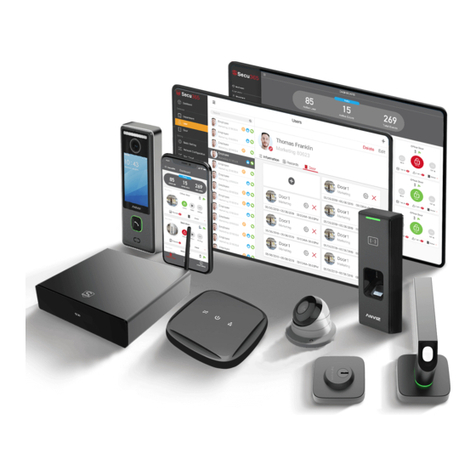
Anviz
Anviz Secu365 user manual
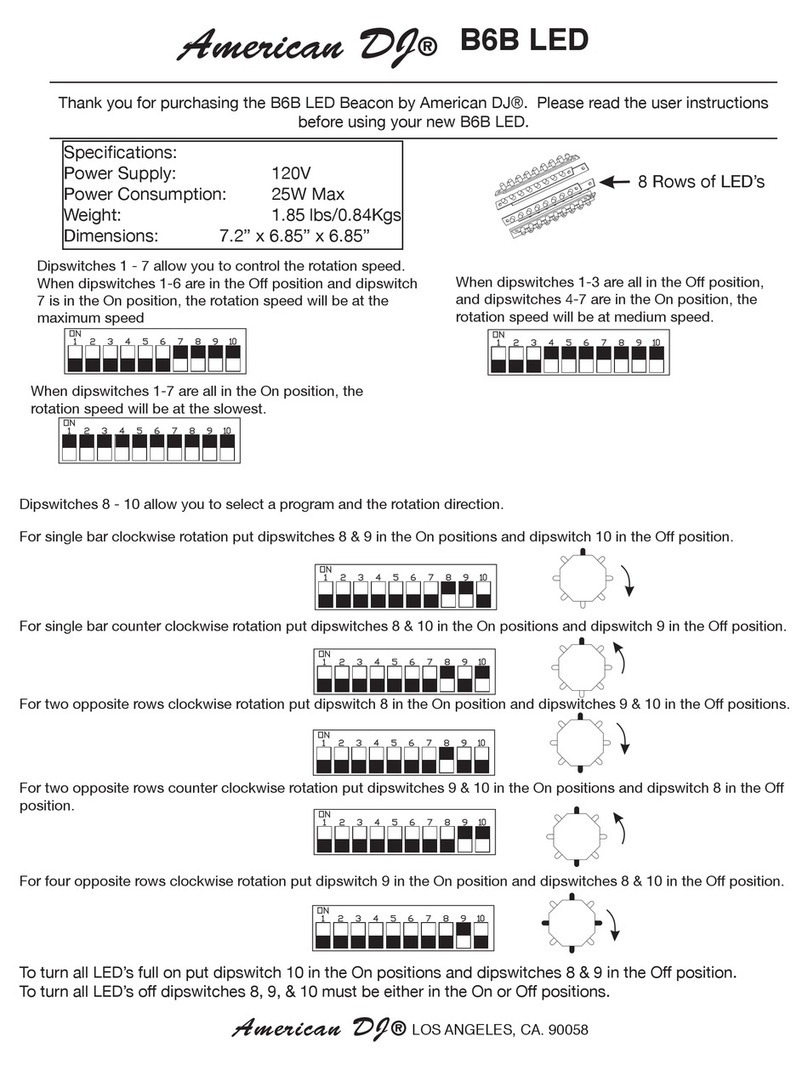
American DJ
American DJ B6B LED User instructions
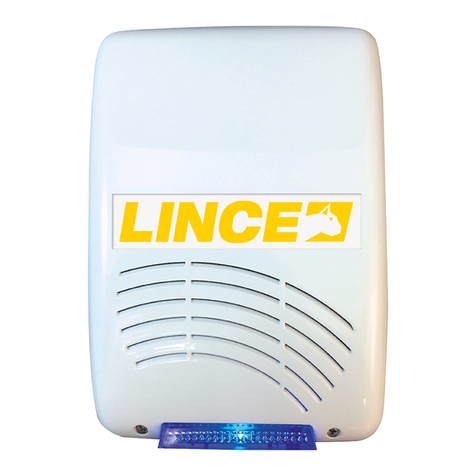
Lince
Lince ZENITH GOLD 869 Series Installation, operation and maintenance manual
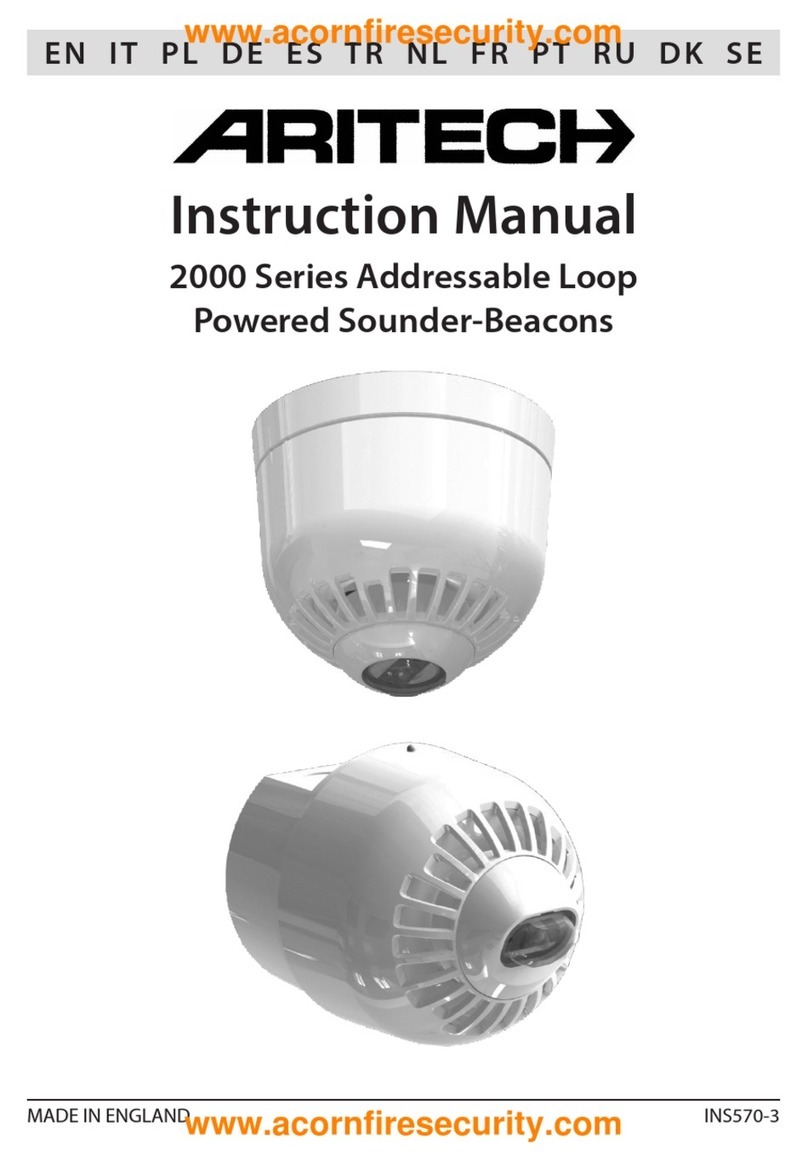
Aritech
Aritech 2000 Series instruction manual
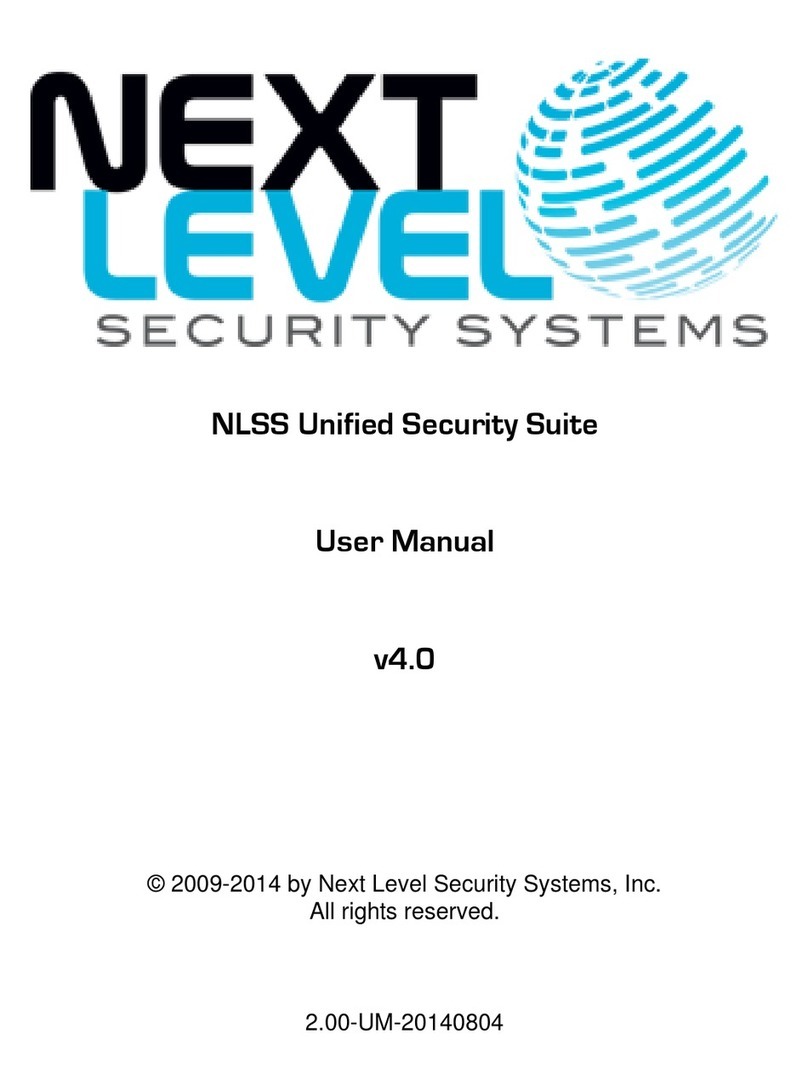
Next Level Security Systems
Next Level Security Systems NLSS Unified Security Suite user manual
